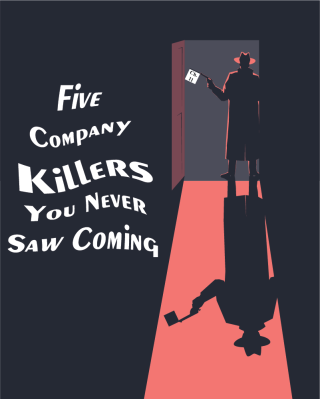“As a business owner, entrepreneur, or company leader, I have my proverbial thumb on the pulse of my company. I know when it’s doing well and when it’s not.”
I remember when I used to think like that.
Then there was the company that was rocking along making good money, with happy employees and a great list of clients that folded within two years. The owner said afterward, “I never saw it coming. One day we were posting huge profits and bonuses, the next we were selling the office furniture for ten cents on the dollar.”
What happened? Like many firms—maybe yours—this biz owner built his firm right, but he neglected one cardinal rule of business that cost him the company:
Growing a business isn’t the same as running one.
This owner had a smart, seasoned set of senior experts and a young, energetic team of talent, but nobody in-between. The brass at the top couldn’t communicate with soldiers in the foxholes. As they grew, the work suffered and when their largest client chose not to renew their contract, the downward spiral took only months to spin out completely.
We’ve all got blind spots. We’re working 12-hour days, dealing with shifting priorities and a barrage of hurdles every hour. When we’re too busy working IN our business to work ON our business, it’s easy to commit some fundamental mistakes that can kill your business:
1.
Bad HR – To put it simply, we hire too quickly and we fire too slowly. We don’t have a plan for screening applicants or “on boarding” new employees. Bad hires can tank our profits and ruin our company. Nobody wants to be the bad guy, but we’ve got to cut bad hires loose. Just this week, I spoke with a business owner whose employee took him for $200,000 and skipped town. Game over.
2.
Failing to Plan– Entrepreneurs are famous for going with their gut. That’s fine, as long as we put our gut into a format, process, or system. Lack of performance standards, protocols, or procedures costs big money. So does neglecting our monthly P&Ls. If you can’t read and interpret a monthly P&L and balance sheet, learn now. Get help here and ask for Jay Montalbano. (
www.htbcpa.com )
3.
Investing in Stuff Rather Than People. Most great employees are grown and developed, not hired. It takes time and money to monitor them, train them, engage them, and inspire them. You can have an espresso machine in the break room if you want, and your mediocre employees will appreciate it. But consider using that money to send a key man to a training or development conference instead. Your investment is better spent on making smarter, more engaged employees than on half-caff soy double mochas.
4.
Keeping it to Yourself – When things aren’t going so well, speak up. Get advice. Find help. If we stay quiet, we’re just asking for Chapter 11. Our CPA, business consultant, or marketing coach (did you see what I did there?) can help. Most small biz owners don’t have a board of directors that can give help, advice, and resources, but help is readily available. My friend Keith at The Alternative Board (
www.tabmetrobr.com) is a good place to start.
5.
Neglecting the Brand- This one’s personal to me. The first thing that gets cut when business is tough is advertising. No! Companies don’t grow customers by living under a rock. Year after year, study after study, it has been shown that cutting advertising does not help the bottom line in the long run. But I will say this: cutting the bad advertising does help! Call me to find out what to cut and what not to cut.
There are killers on the loose. While we are blessed with a nation of business-minded people, the odds are stacked against us. The free enterprise system is a wonderful thing, but it’s harsh and at times, cruel. Most companies don’t make it. But I’ll bet they didn’t check this list.
